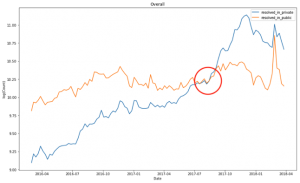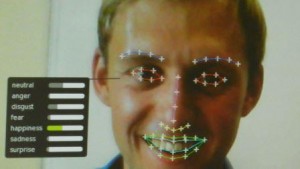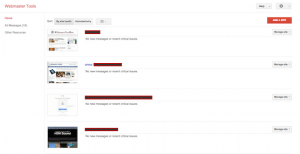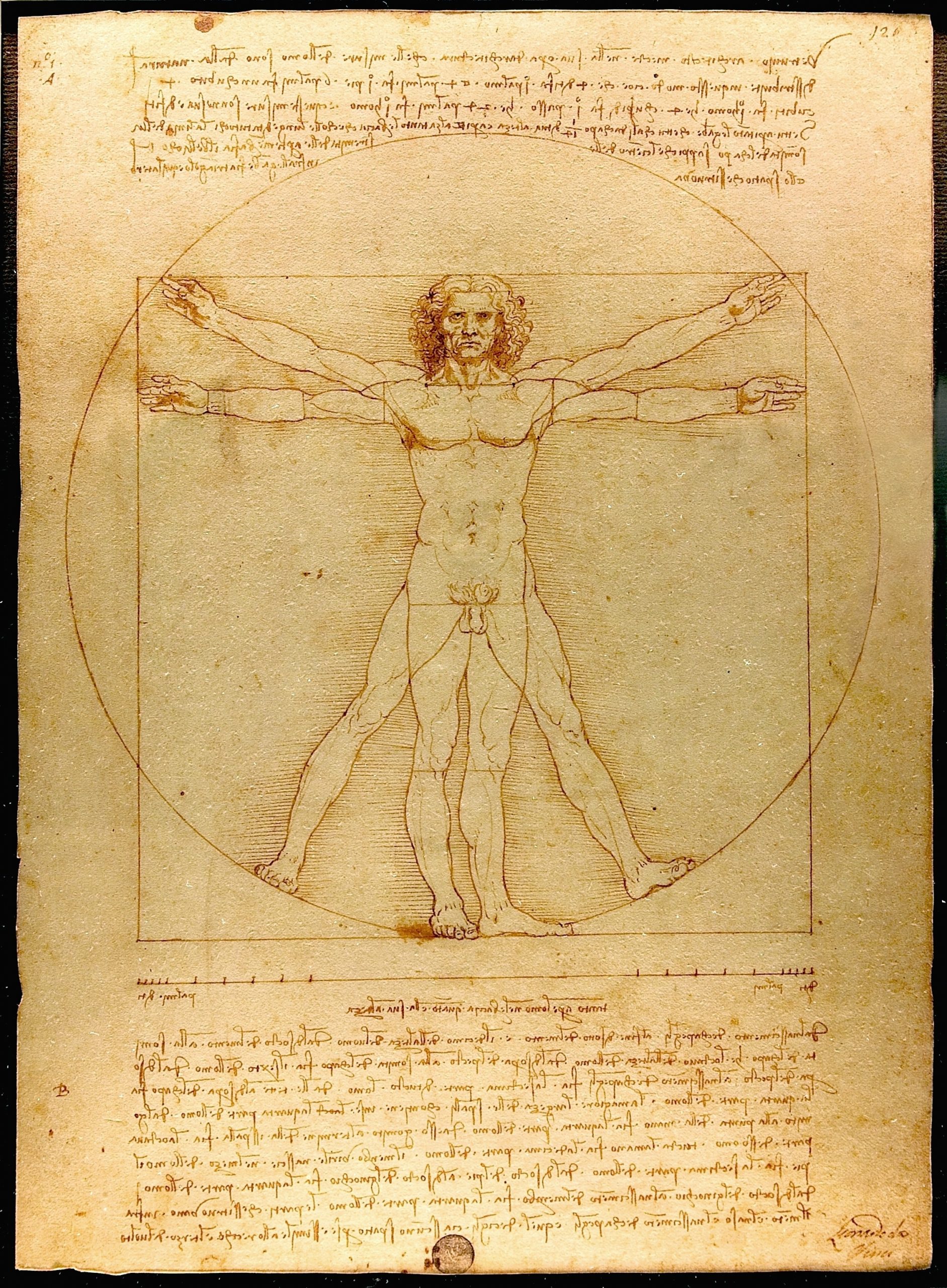
Inside every small business owner, there are 3 personas, each competing for time as the leader. The three personas are:
- Technical (work-focused)
- President (inwardly-focused)
- Chief Executive Officer – CEO (outwardly focused).
To succeed, a business must possess all three personas.
The technical persona is about the present and doing the work.
The president persona uses the past to find trends and improve execution.
The CEO persona is focused on the future and looks for ways to pivot and re-align the business so it can grow and prosper in an ever-changing landscape.
The following table is a breakdown that compares the activities of a CEO and President in more detail.
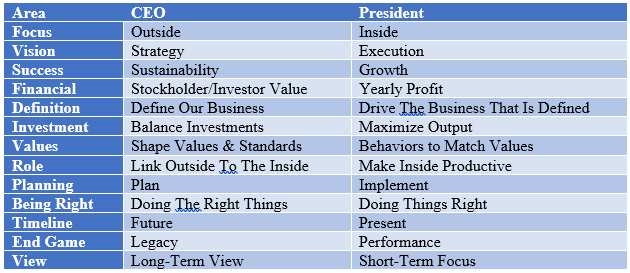
For self-employed, micro, or lifestyle businesses (i.e., businesses with less than $ 1 million in revenue), all three personas often reside in a single person, the business owner.
Business Owner Bull’s Eye Model
To understand how the three personas work together to drive the success of a small business, let us consider what I call the Small Business Owner Bull’s Eye Model.
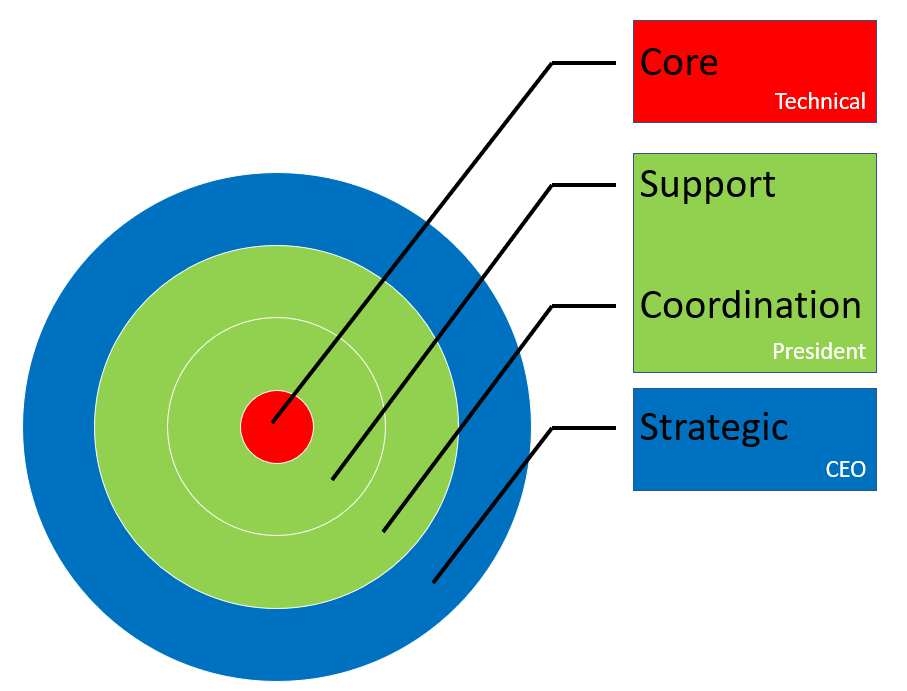
The Bull’s Eye Model is made up of four subsystems: the core subsystem, support subsystem, coordination subsystem, and strategic subsystem. Naturally, there are certain tasks and personas associated with each of these subsystems. Let’s dive into each of these subsystems below.
Core Work Subsystem
At the center of the Bull’s Eye Model is the core subsystem. The core subsystem is comprised of tasks that relate to the actual generation of the output. Core level tasks are activities such as cooking, landscaping, and automotive repair. The core subsystem is the exclusive realm of the technical persona.
Most employees are rated based on their ability to perform these core tasks well. Being exceptionally good at these core tasks leads many people to consider starting their own business. However, having superior core skills usually means that the person loves the tasks associated with the technical persona. Unfortunately, this love of technology is often at the expense of the other two personas, which frequently leads to the failure of the business.
Support Subsystem
Outside of the core subsystem is the support subsystem. The support subsystem is comprised of tasks that support the production of the output, but do not directly cause the outputs themselves to be generated. Support level tasks are activities such as reading and responding to emails, record keeping, hiring employees, and bookkeeping.
Coordination Subsystem
Outside of the support subsystem is the coordination subsystem. The coordination subsystem is comprised of tasks that help to coordinate, develop, or integrate the activities within and between the core and support subsystems. Coordination level tasks are activities such as account management, resource loading, billing, planning, forecasting, managing employees, and payroll.
The support and coordination subsystem tasks are inwardly focused and reward execution. The support and coordination subsystems are the realms of the president persona. The president persona is the manager role and looks at finding ways to make the overall business more efficient and profitable.
Strategic Subsystem
Finally, outside the coordination subsystem is the strategic subsystem. The strategic subsystem is comprised of tasks that link the business with the outside environment and assess the degree of alignment and need for change. Strategic level tasks are activities such as marketing & sales strategy, fundraising, and organization development. The strategic subsystem is externally focused and rewards planning, spotting opportunities, and communication skills. The strategic subsystem is most often associated with the activities of the CEO persona. We often think of the CEO persona as the traits associated with entrepreneurism.
Why All 3 Personas Are Important
Many self-employed, micro, and lifestyle small business owners understand the need to perform the tasks associated with the support, coordination, and strategic subsystems. Yet, few crave these activities over the activities associated with the technical persona. Herein lies the reason that many new businesses fail.
The business owner gets satisfaction from doing the work well and often gets recognition when his technical persona is in charge. However to be successful, the business owner needs to not only perform the task associated with the support, coordination, and strategic subsystems, but must enjoy them even more than those of the core subsystem.
The successful business owner needs to let his president and CEO personas lead the business for much of the time and not allow the technical persona to continually wrestle away control. As business mentors and counselors, for organizations like SCORE and the Small Business Development Center, we sum up this concept when we tell our clients they need to
“Work on their business and not in their business.”
Are these three personas balanced in your small business or is your technical persona dominating the others?
Business & Finance Articles on Business 2 Community
(90)
Report Post


